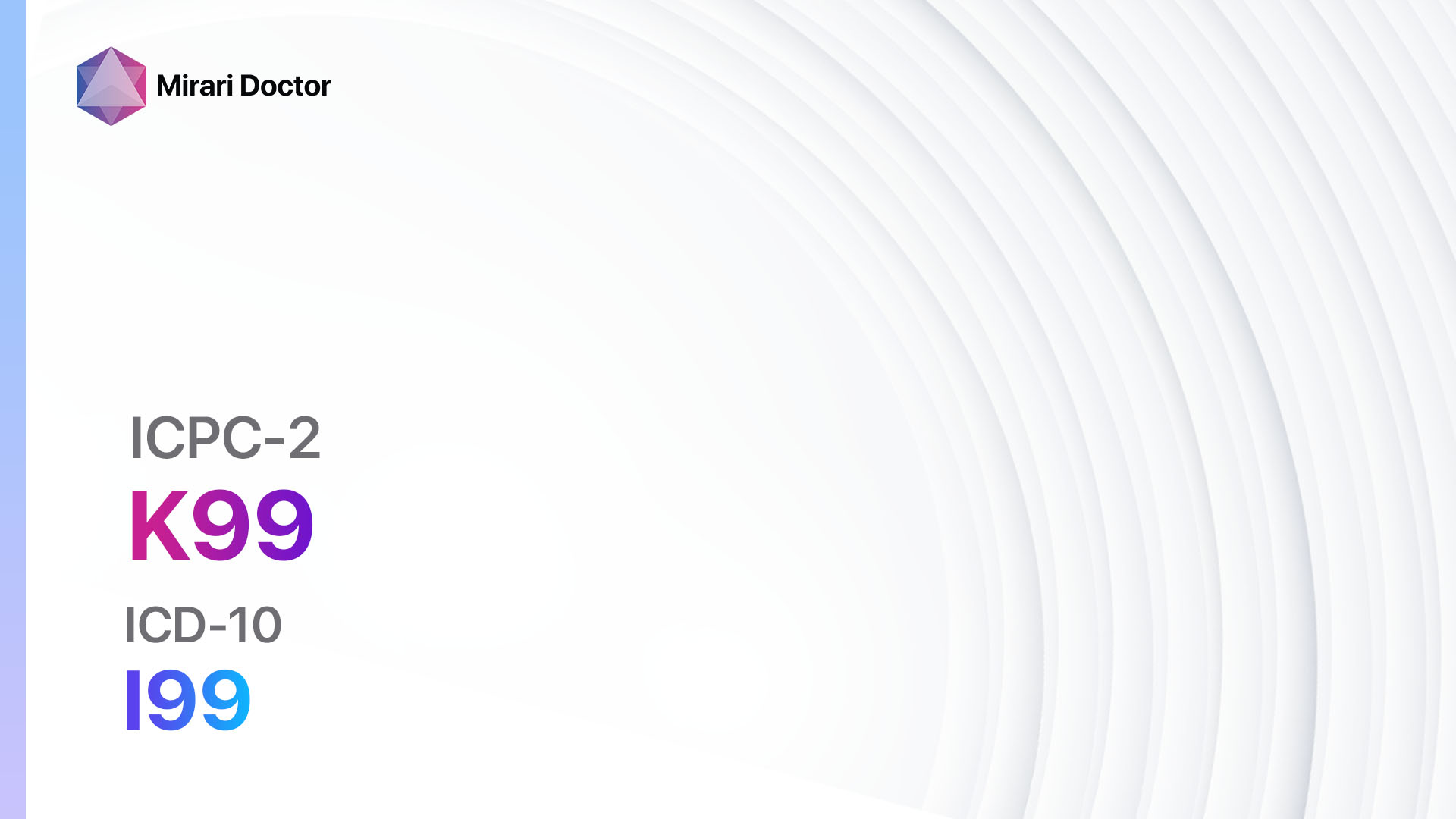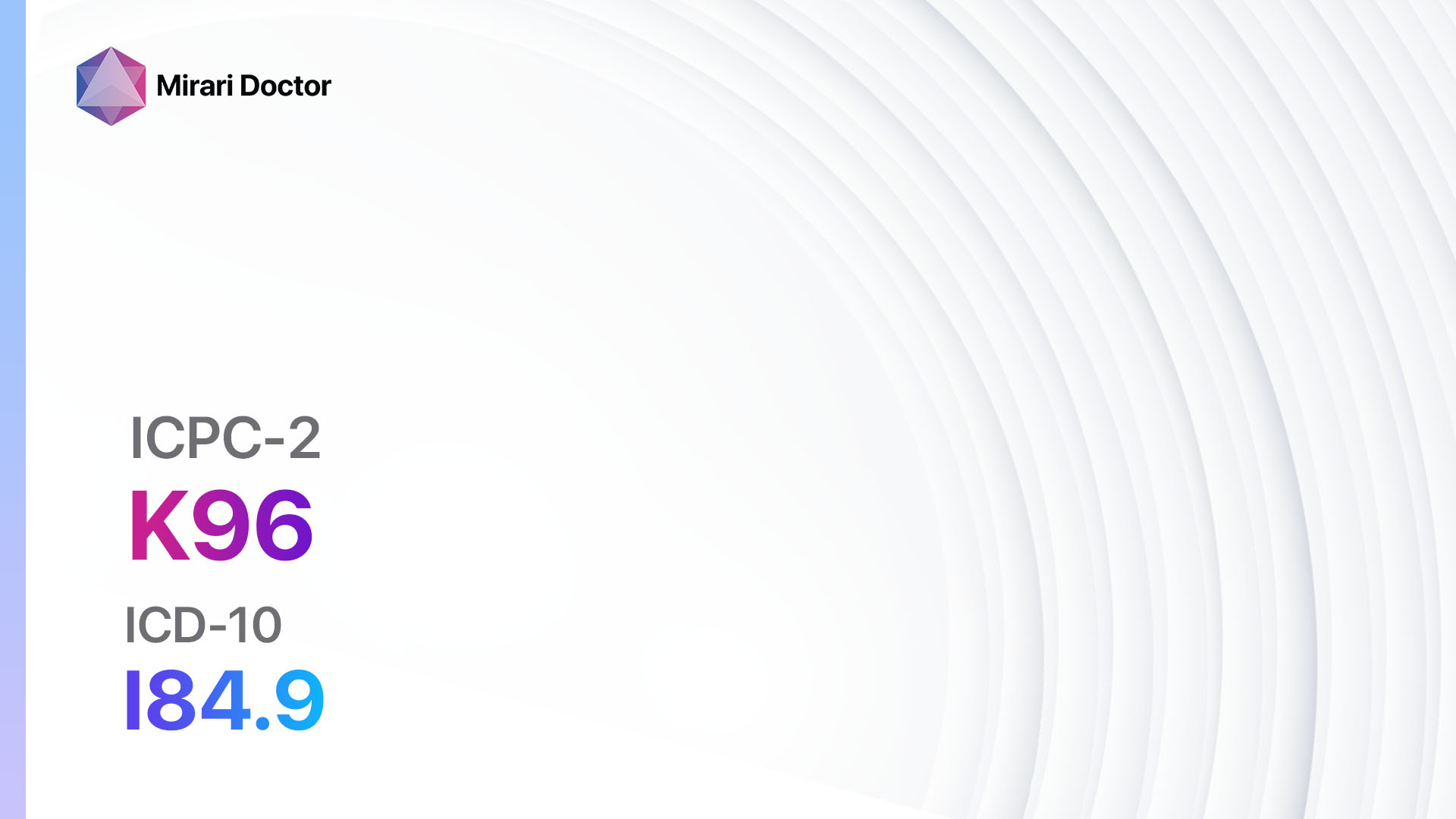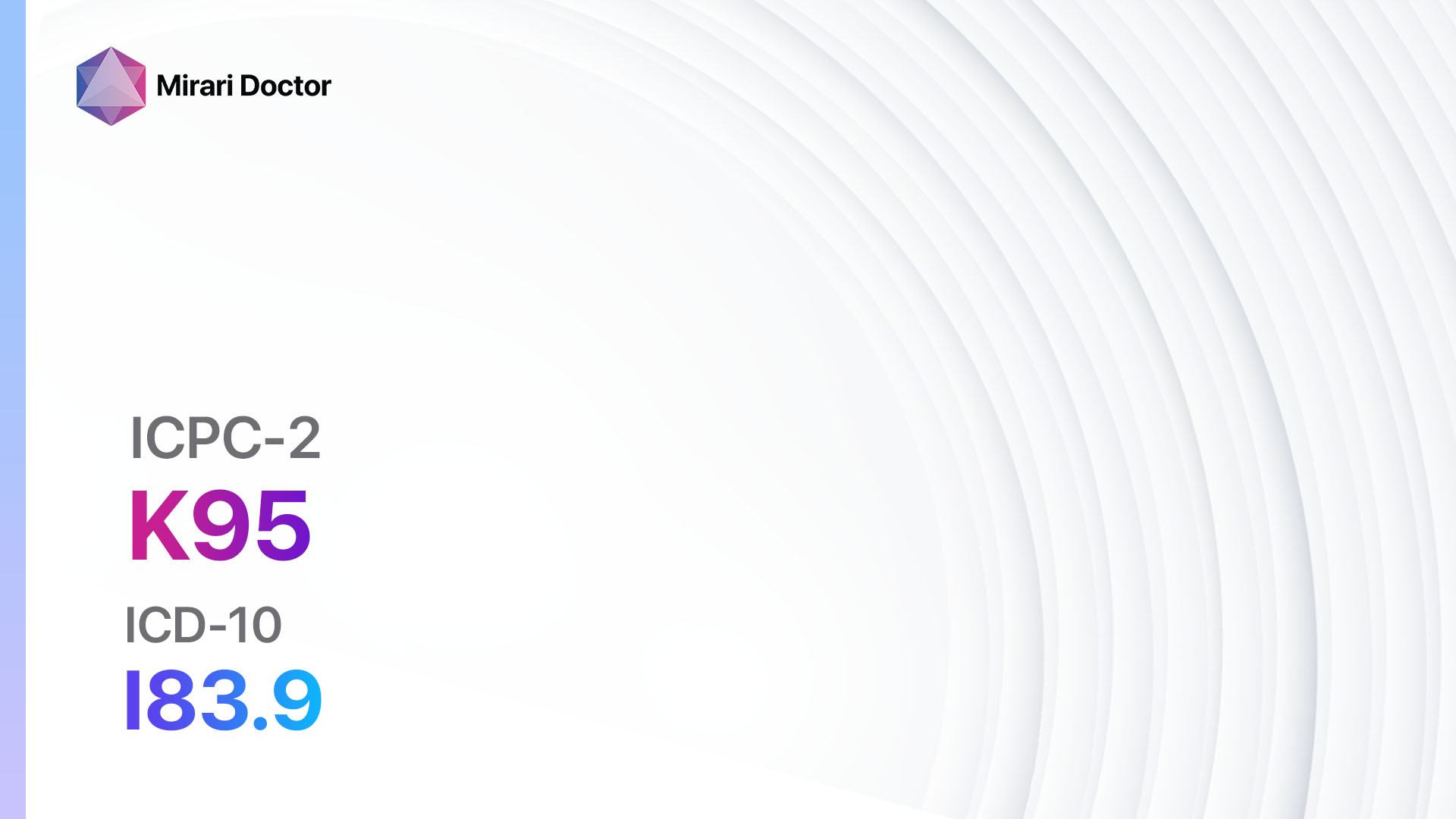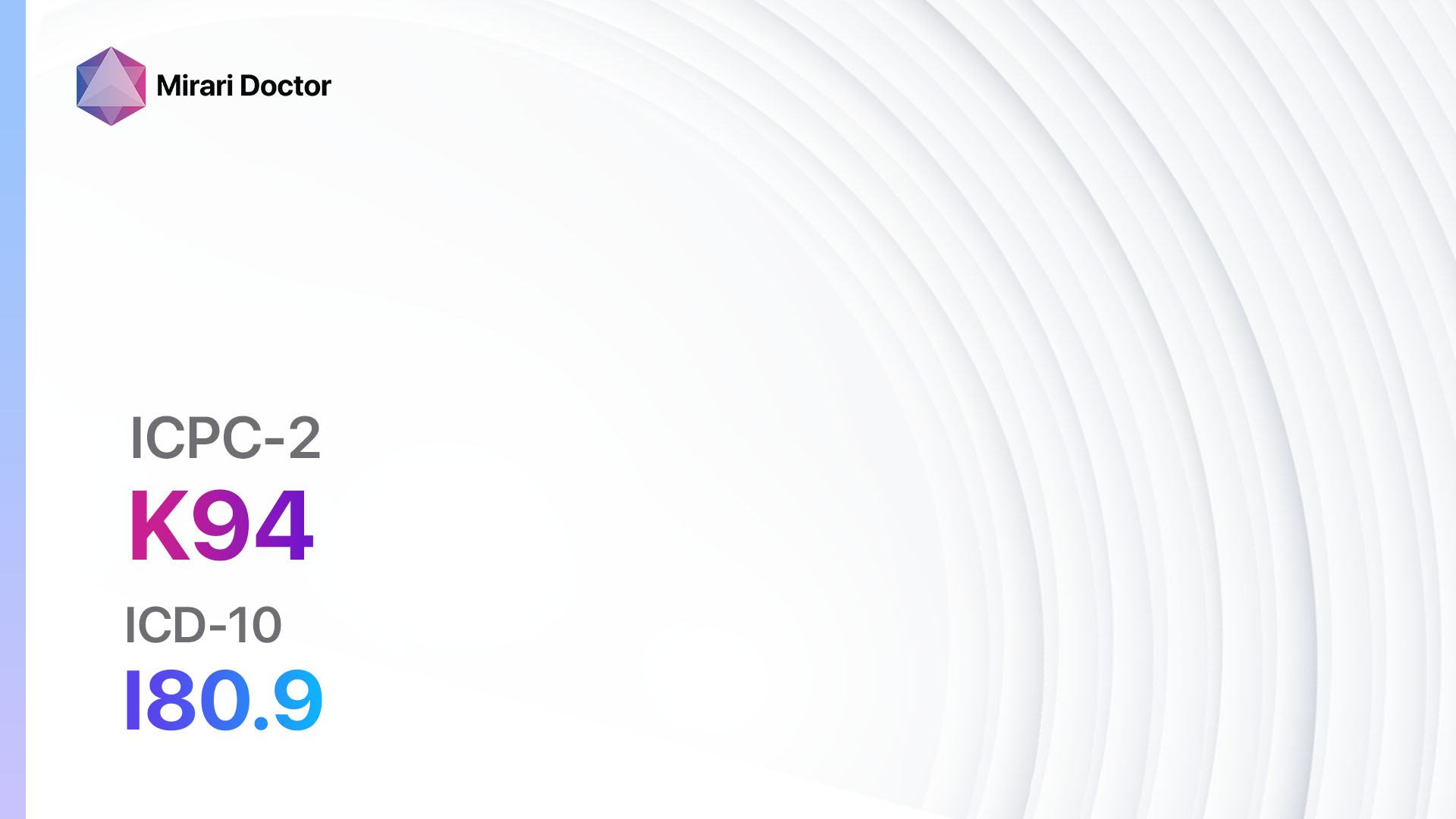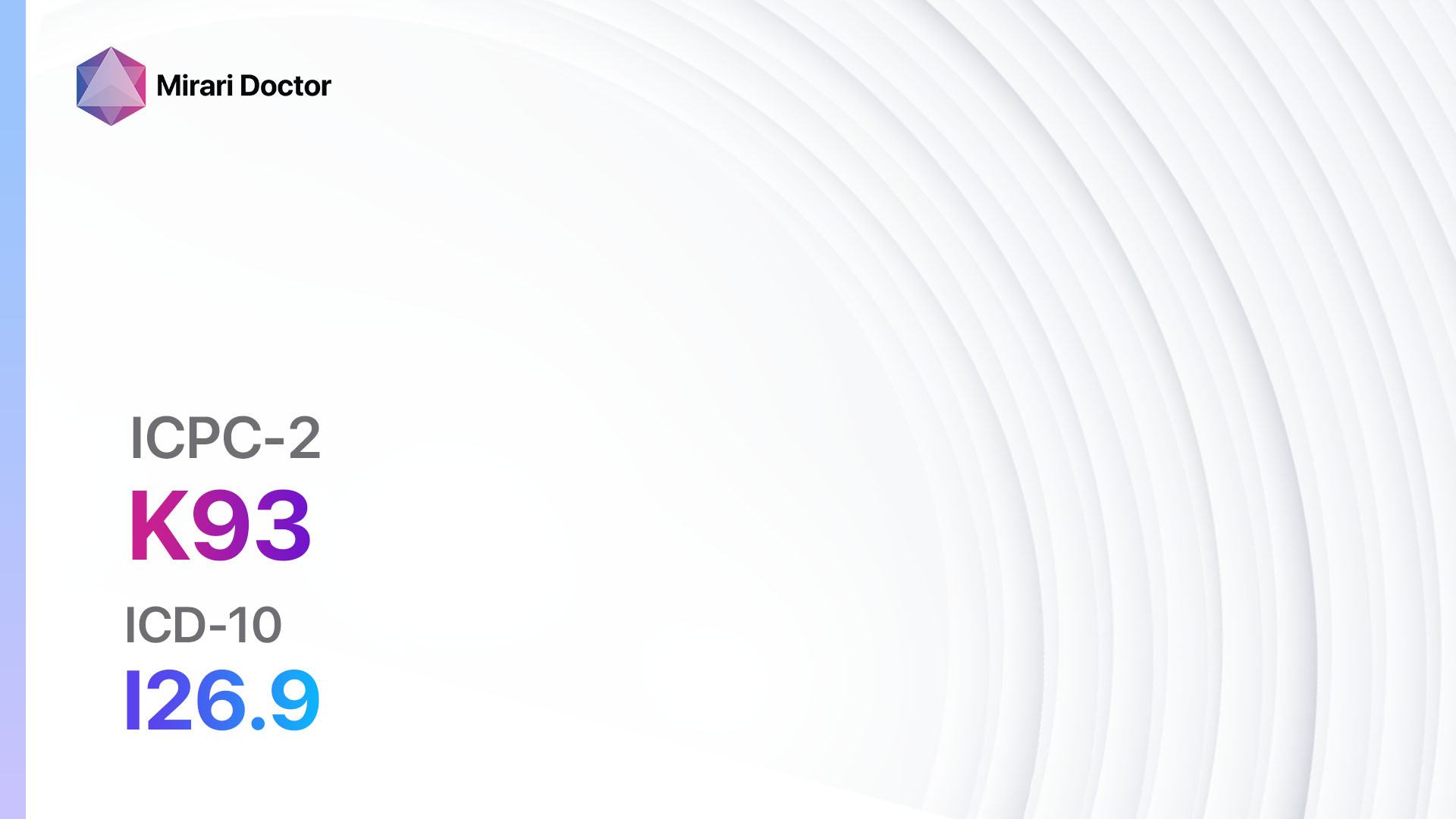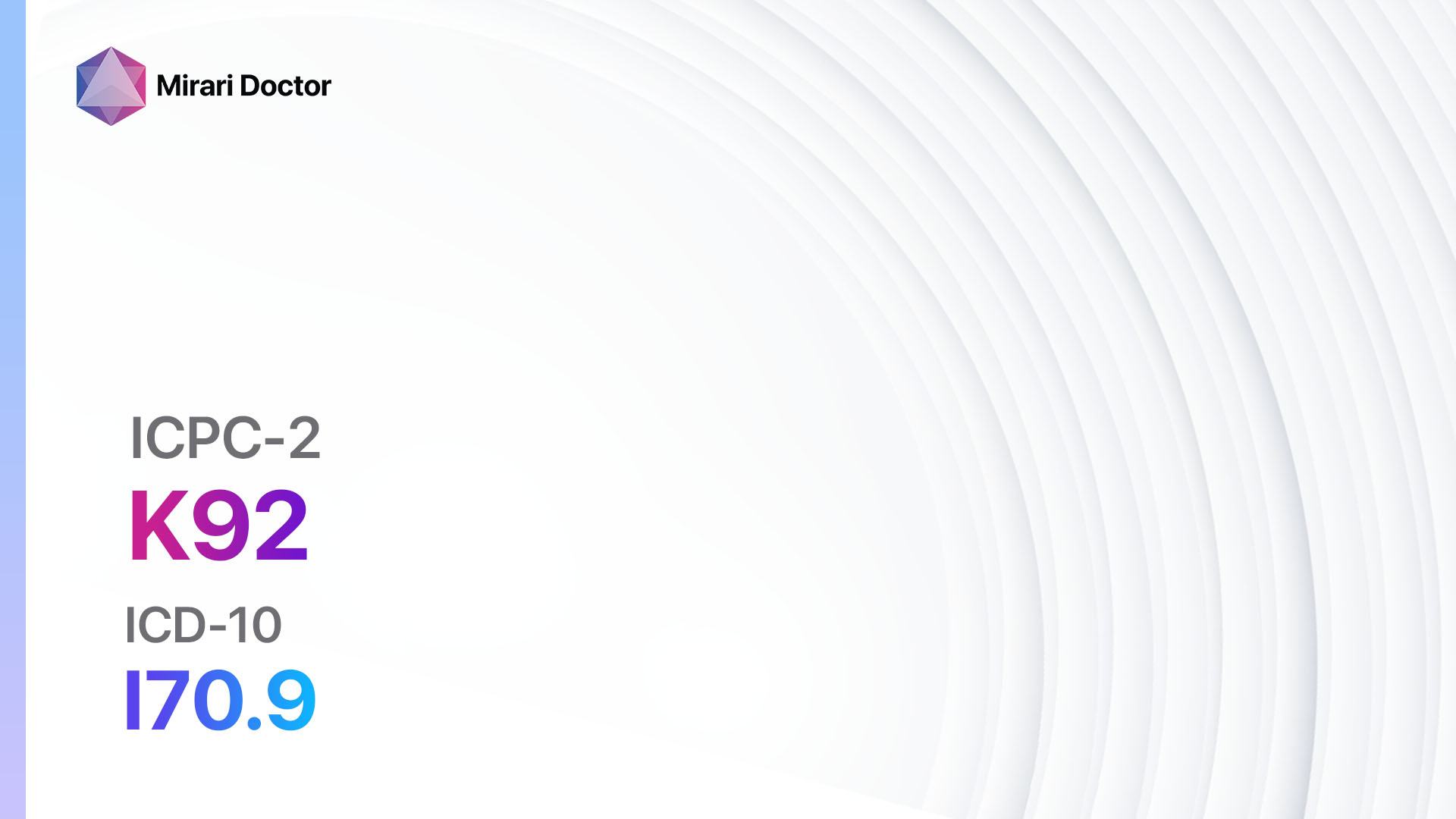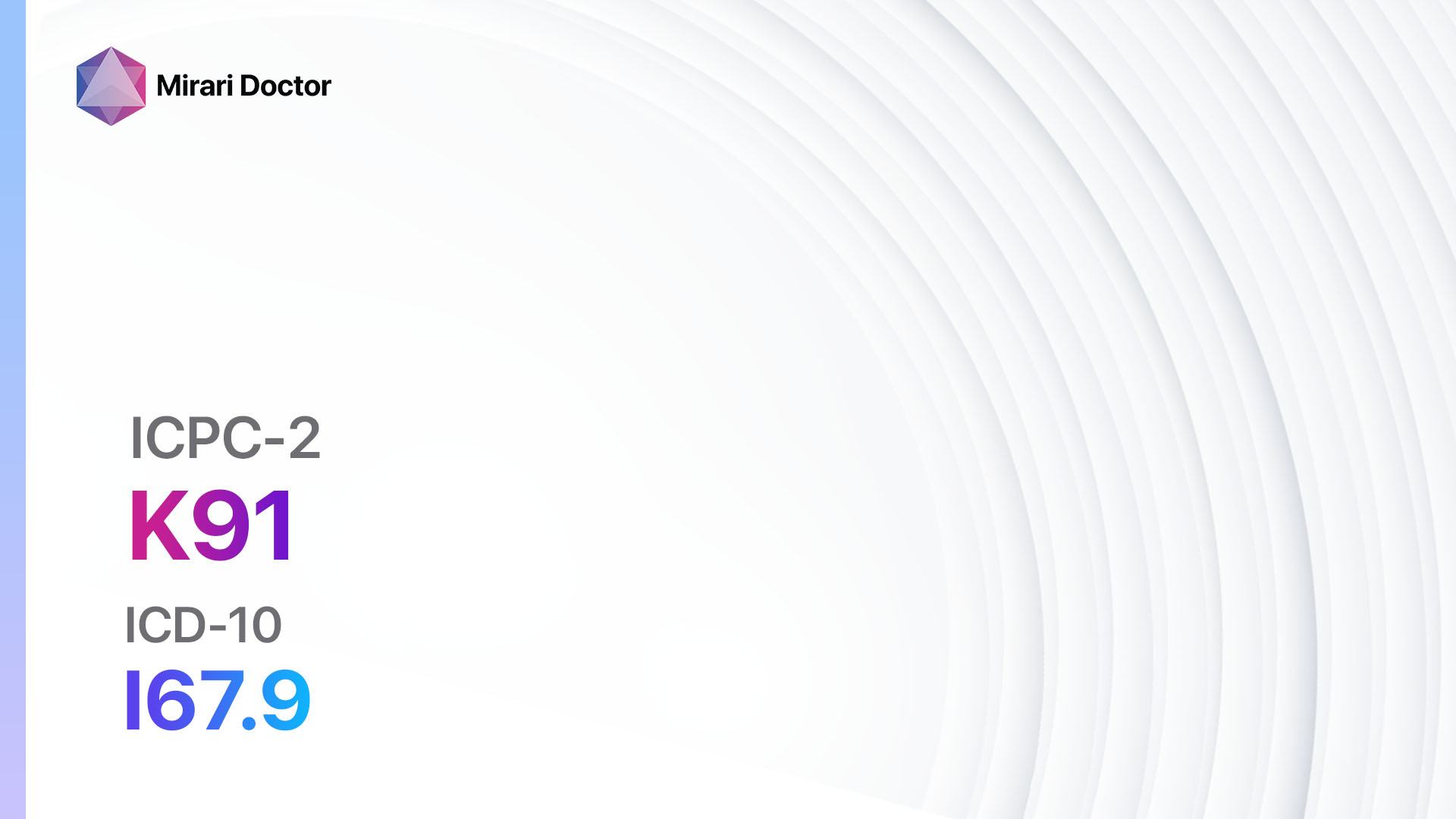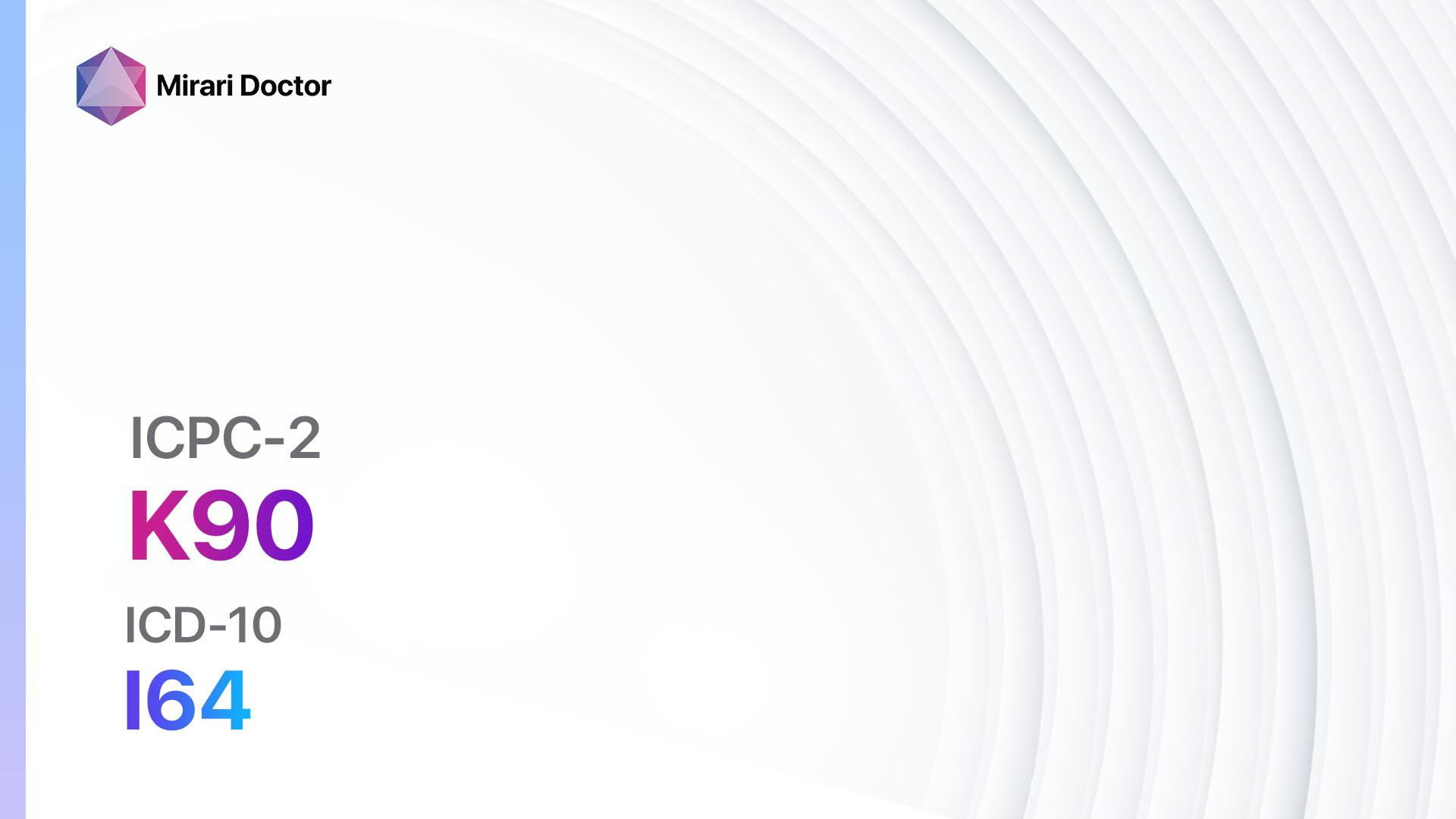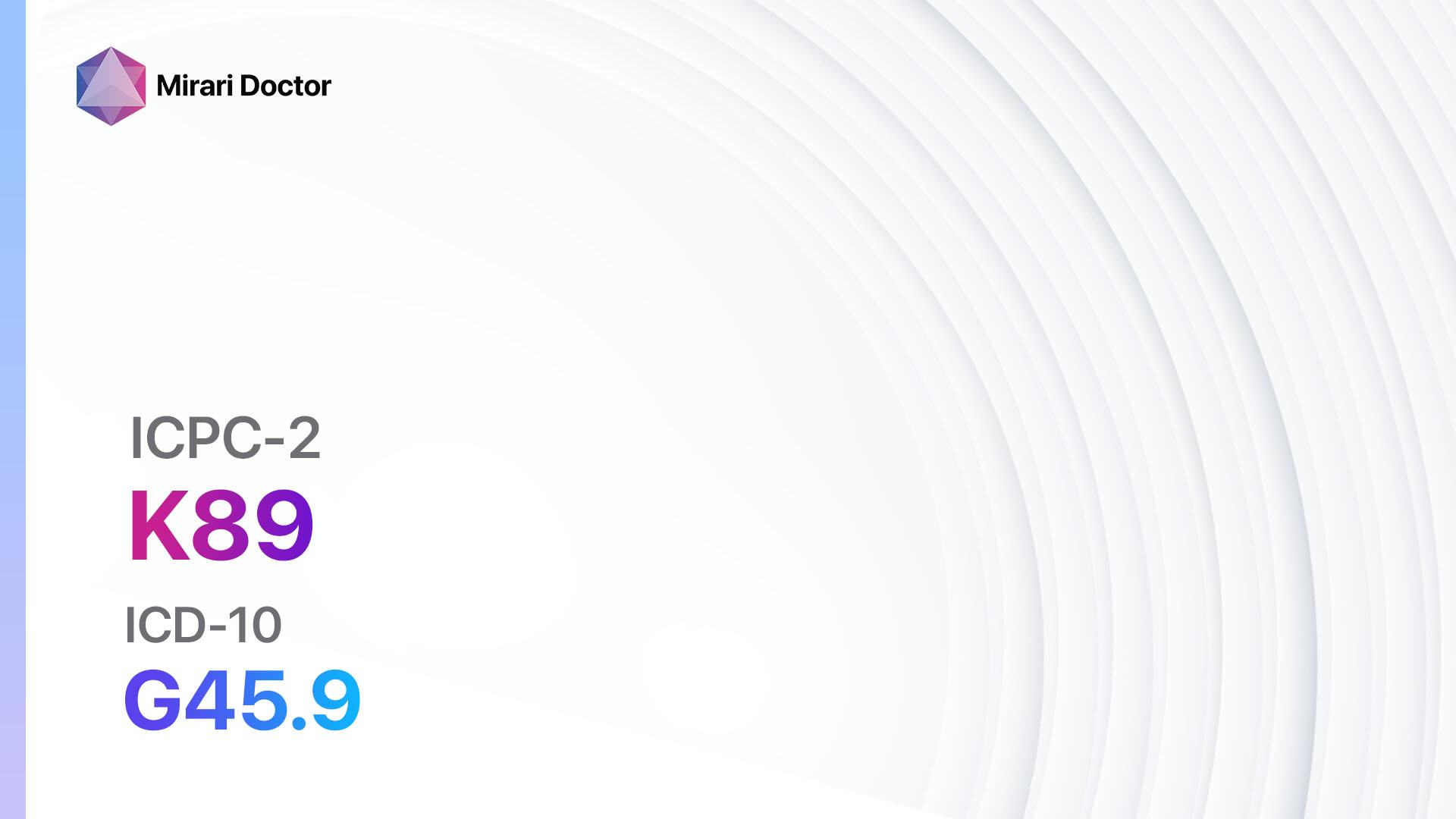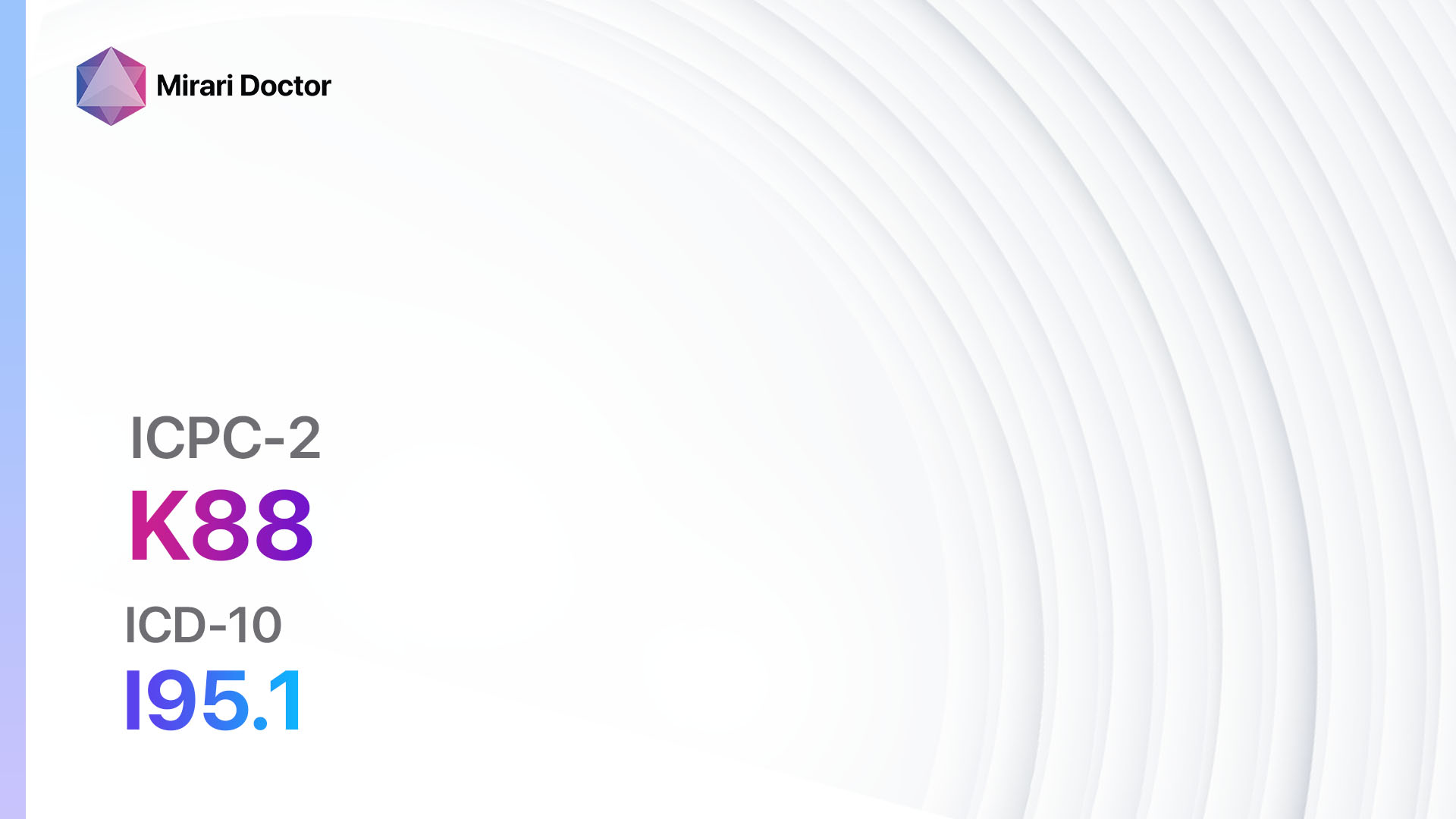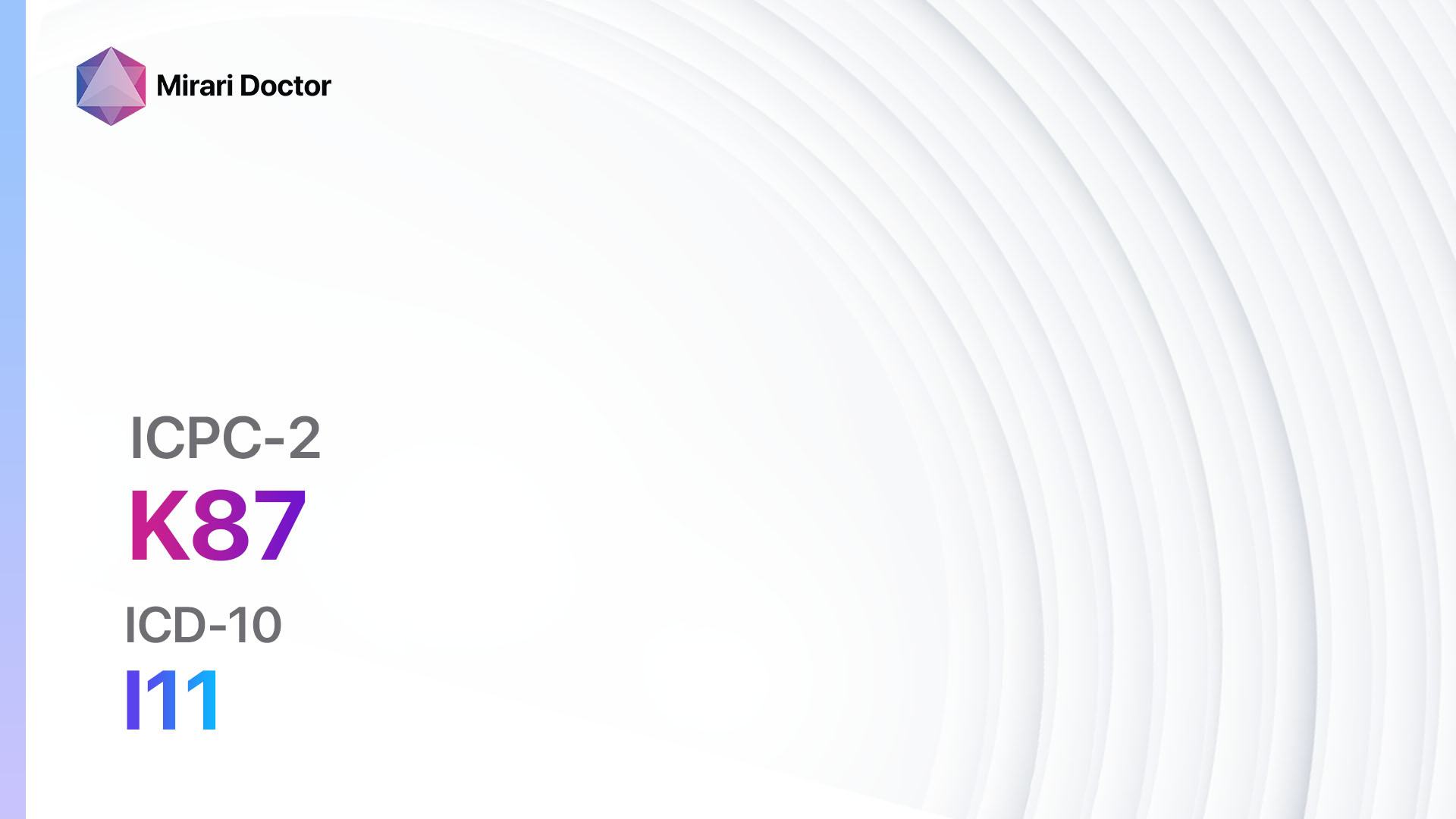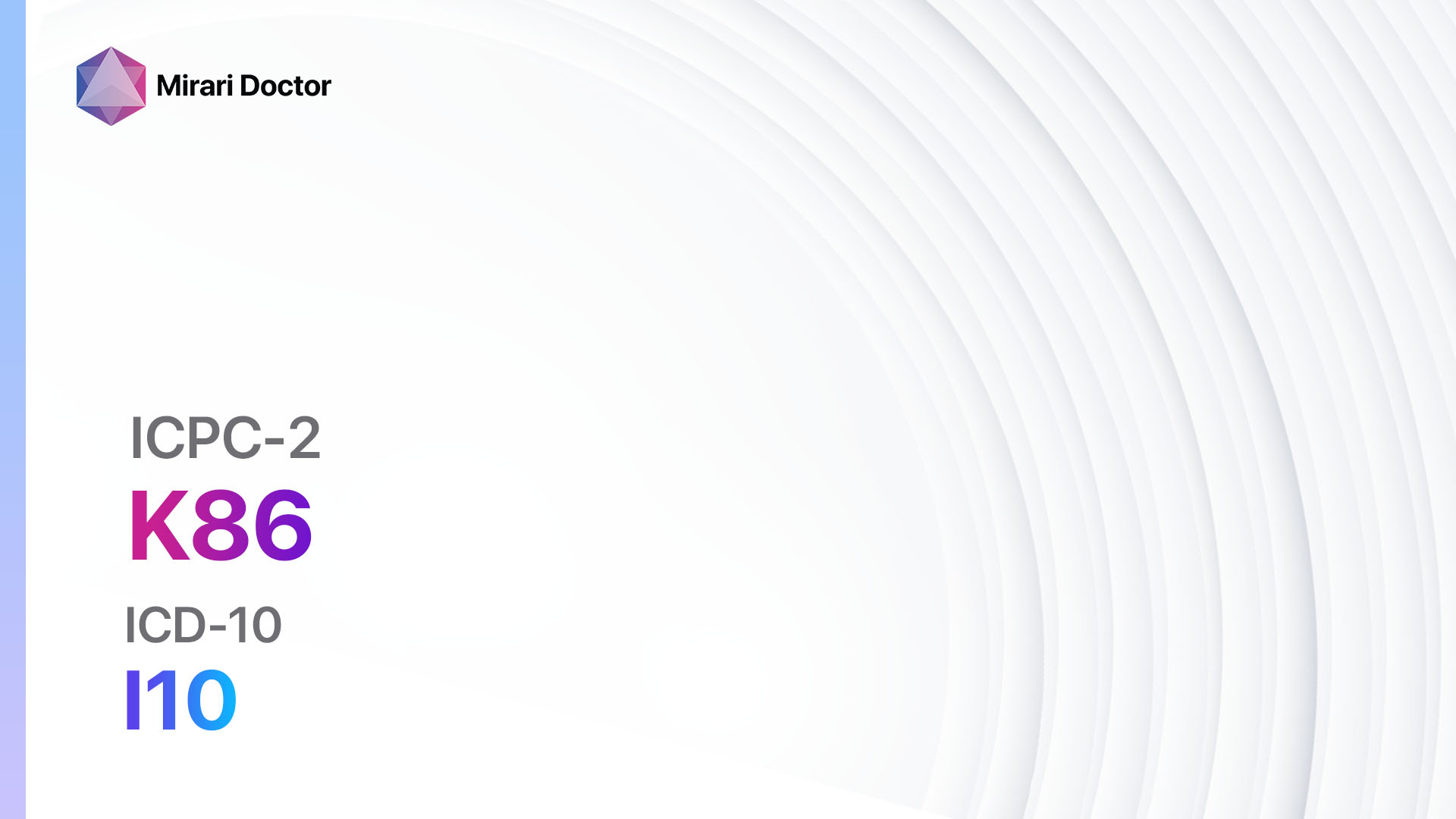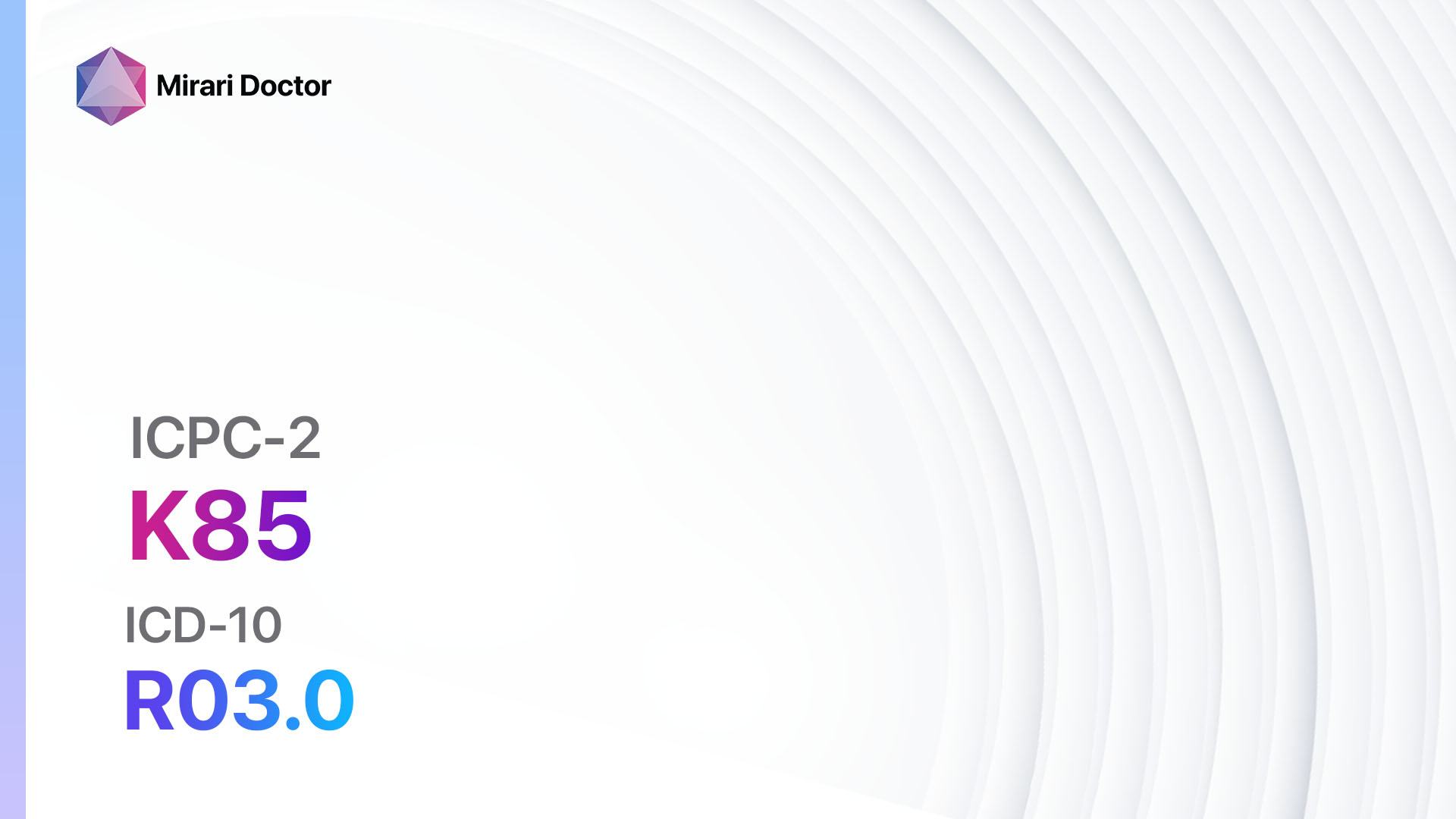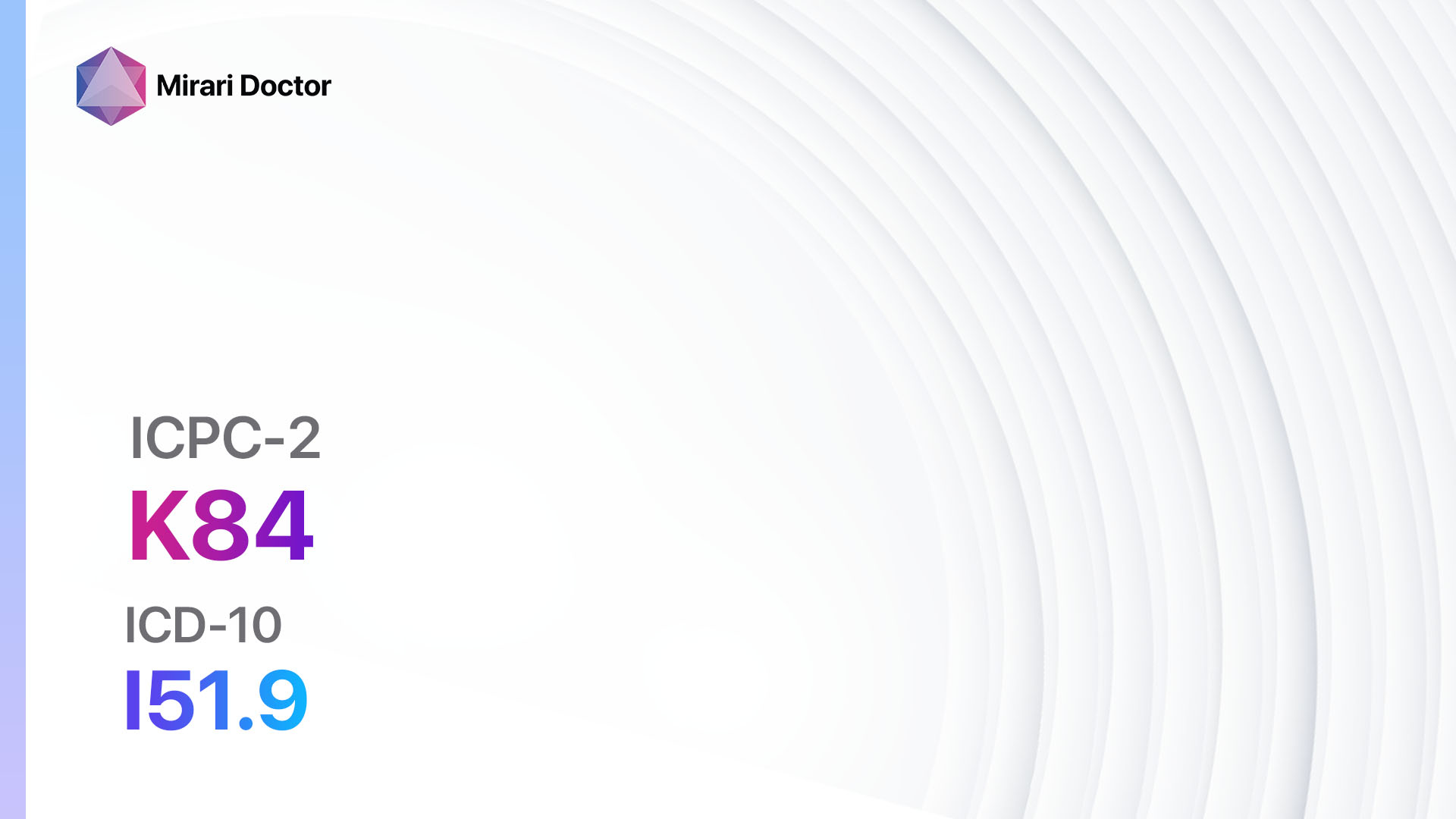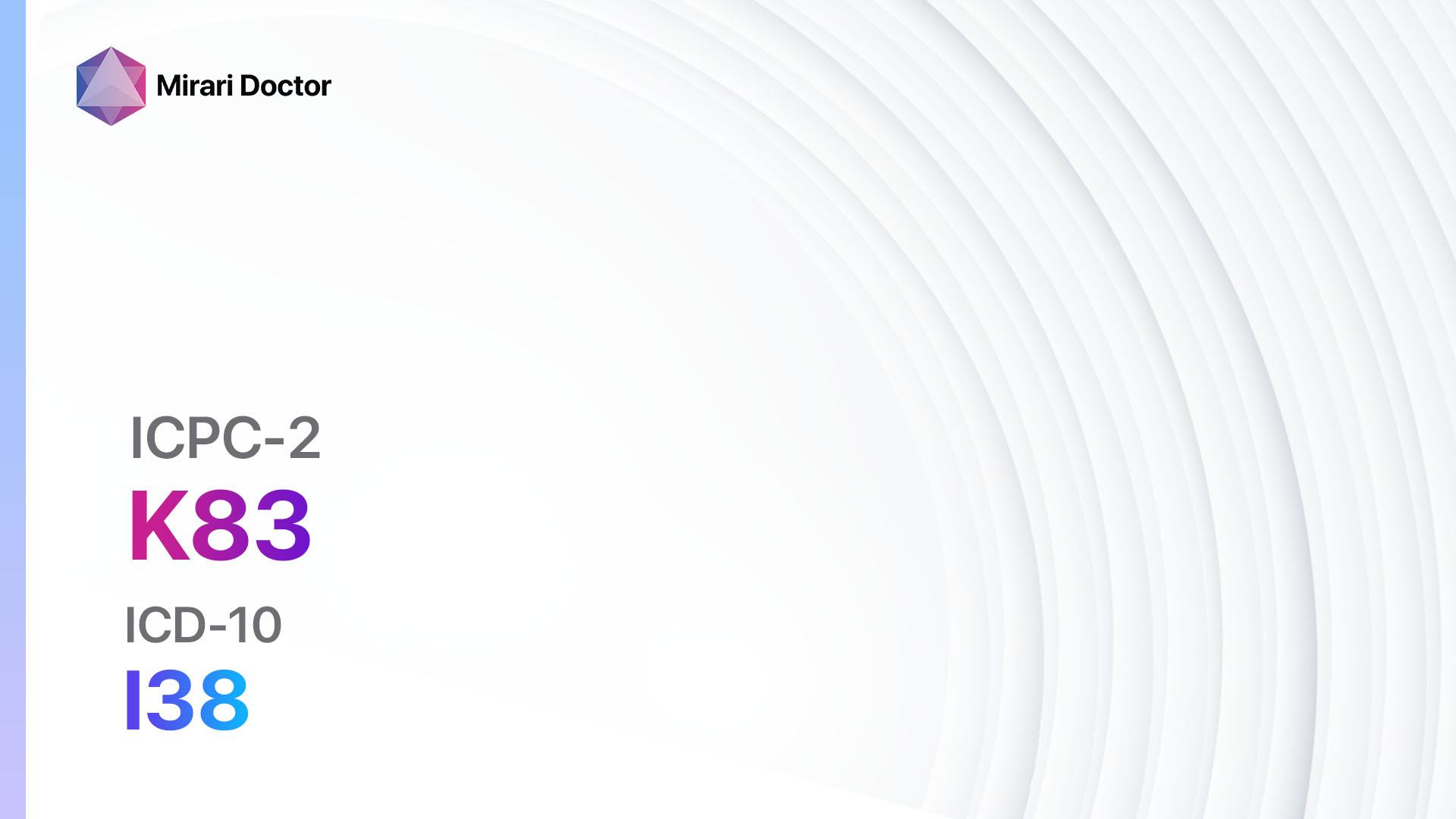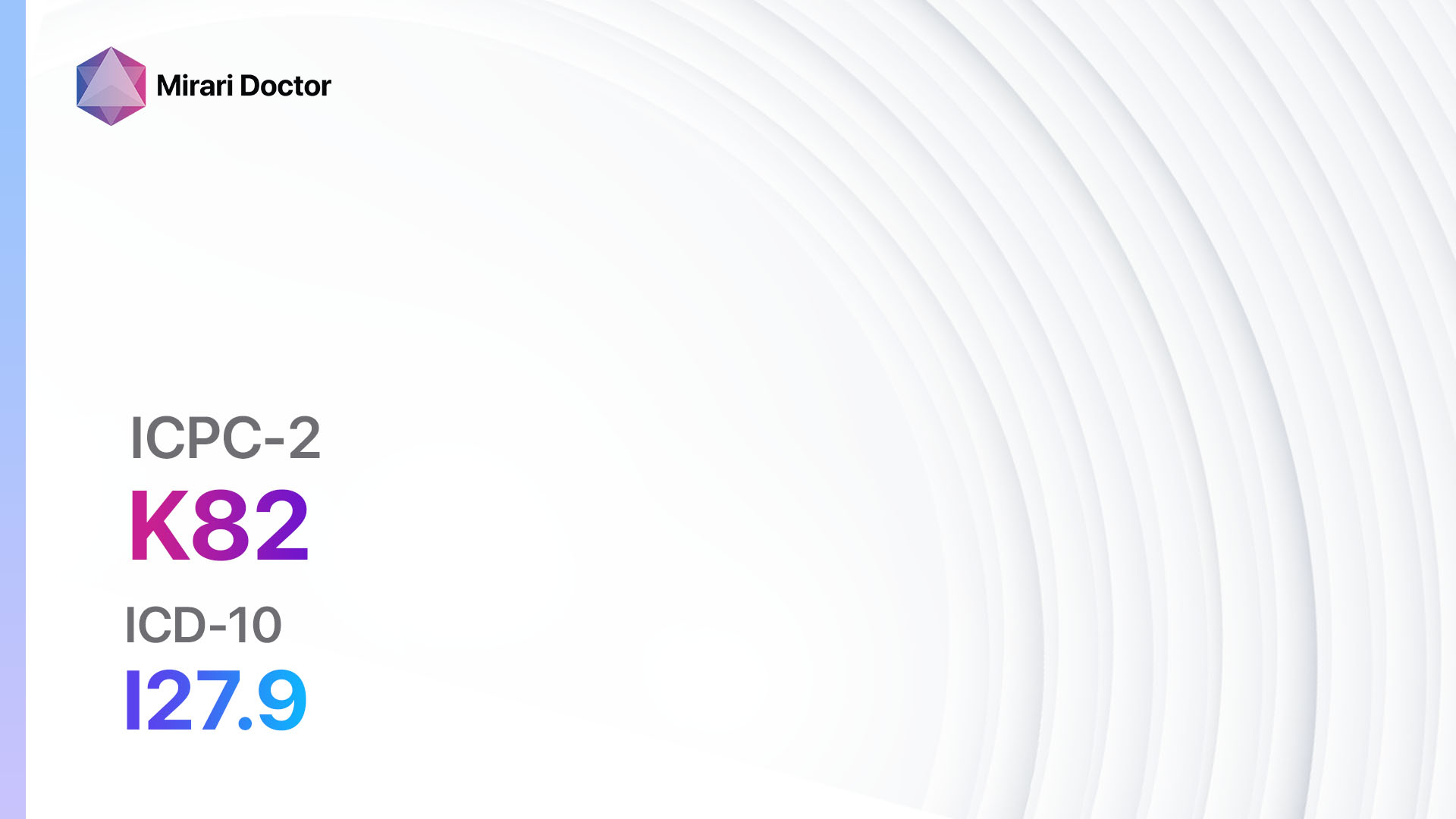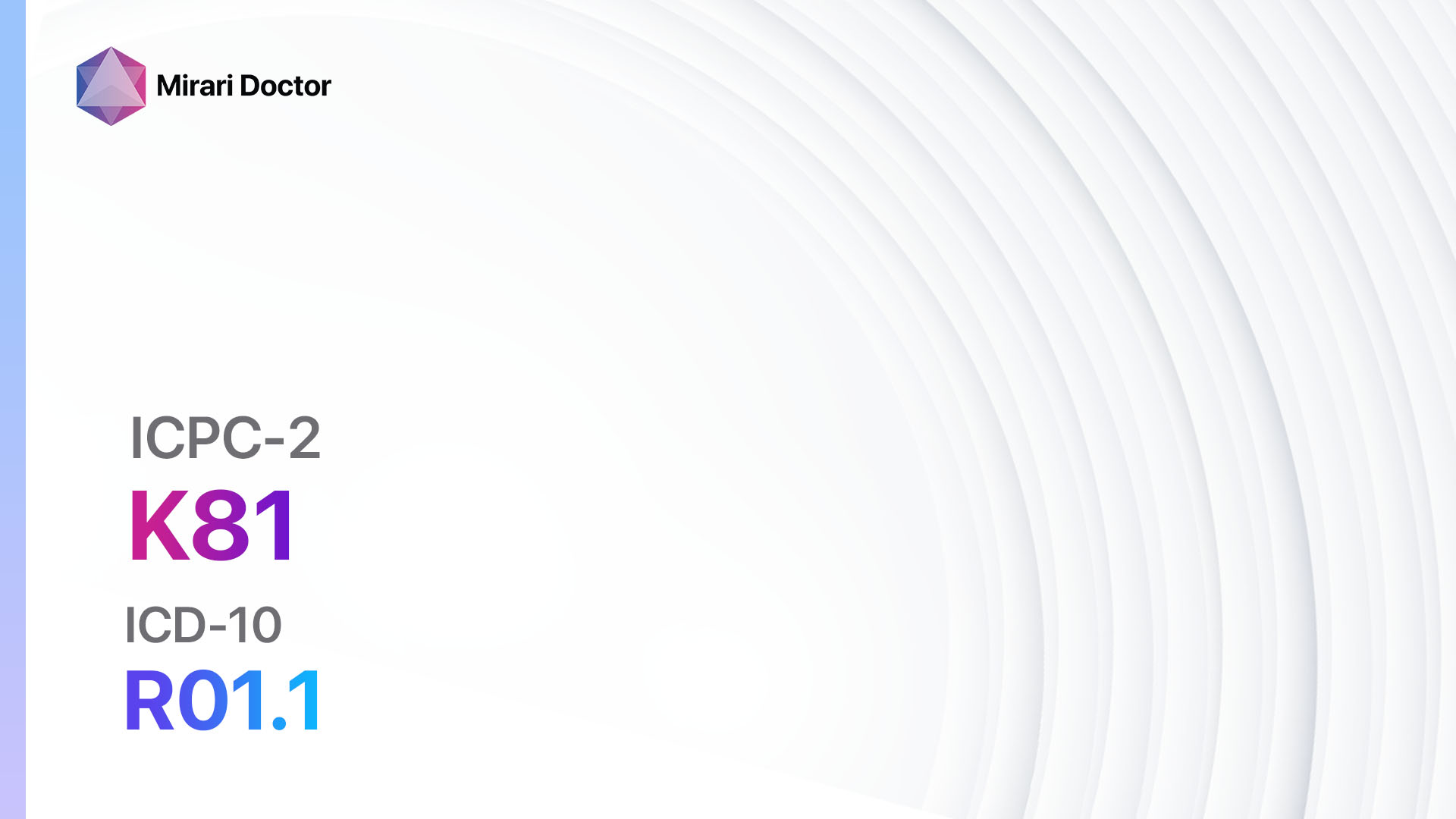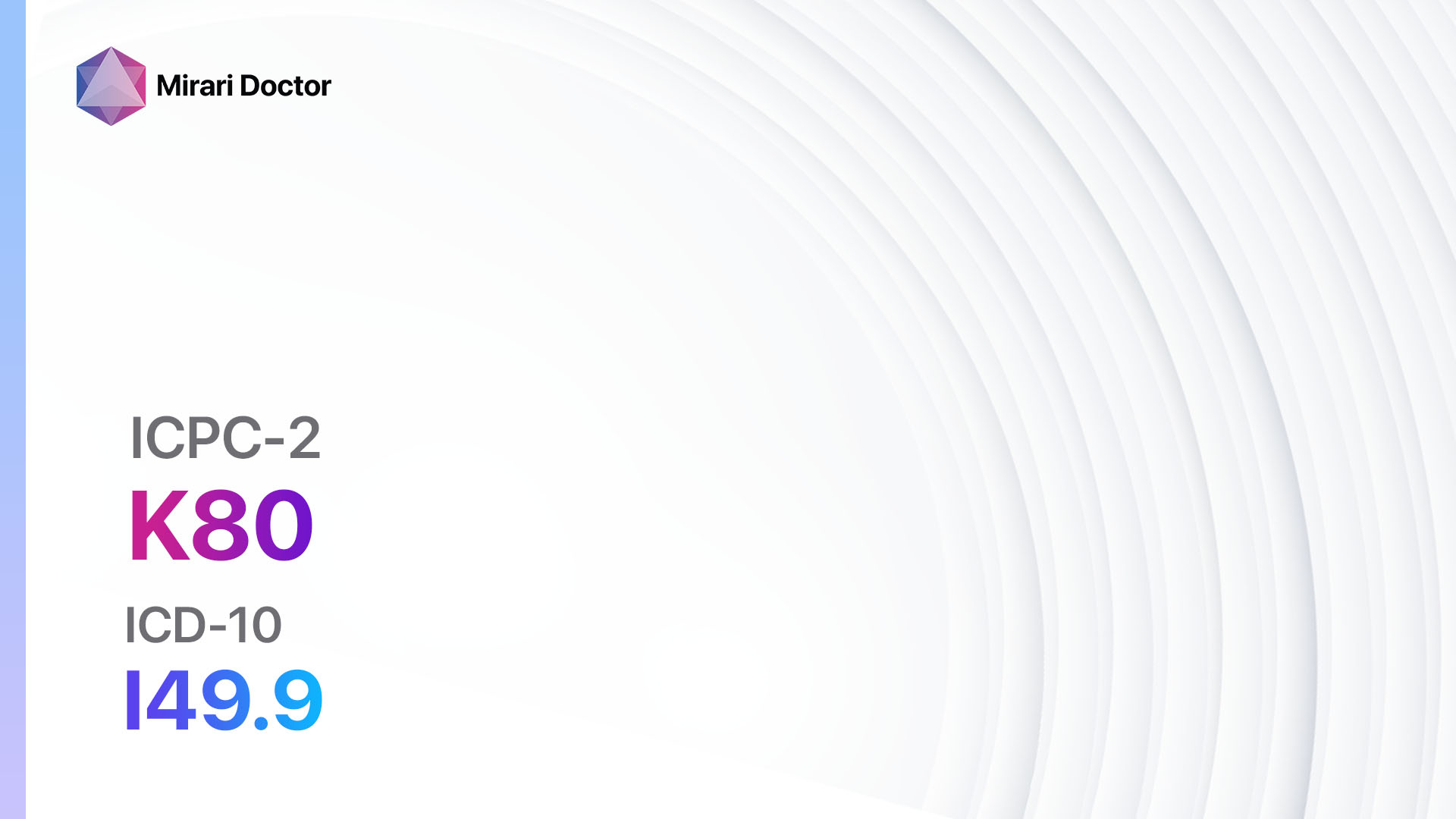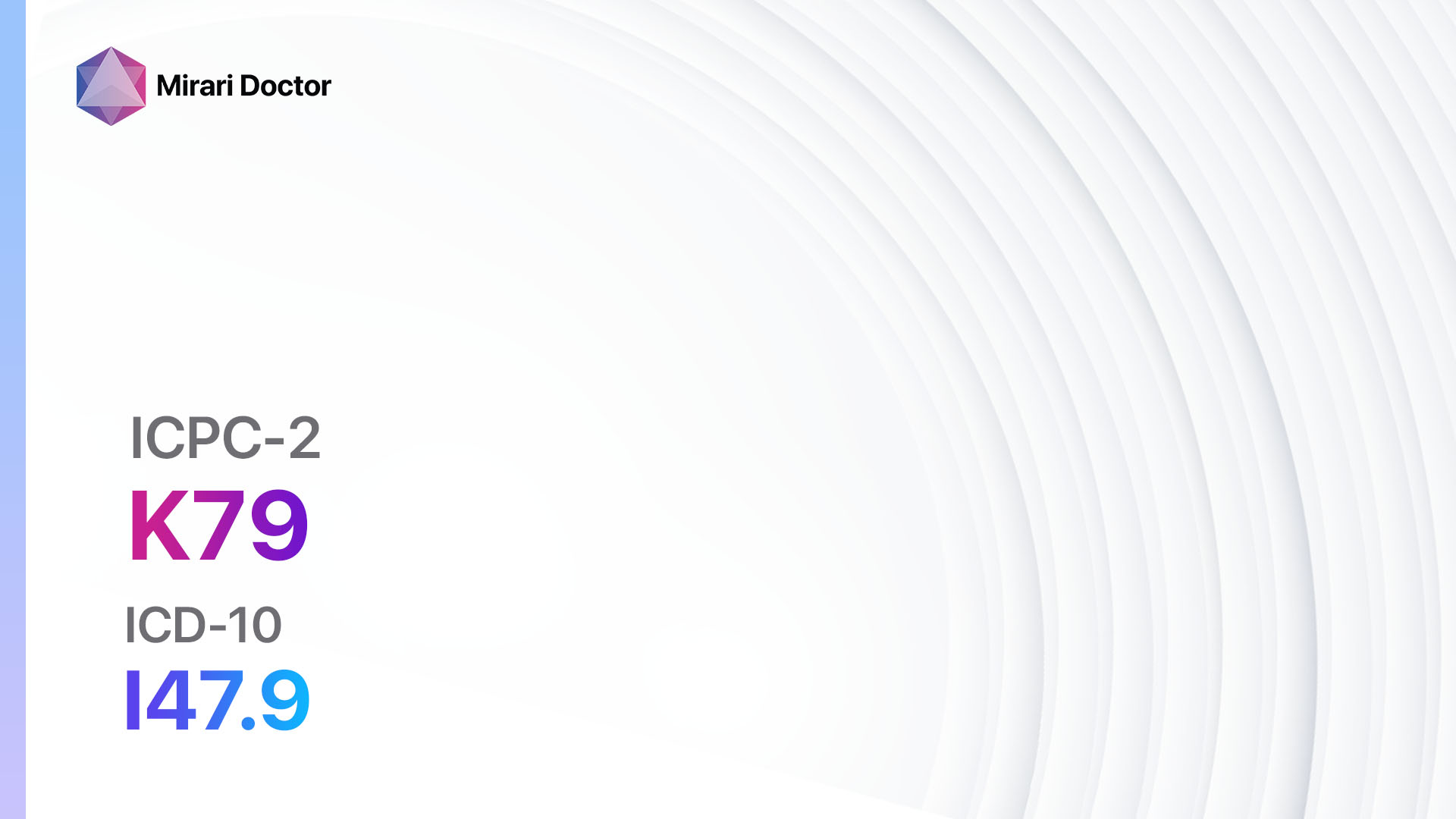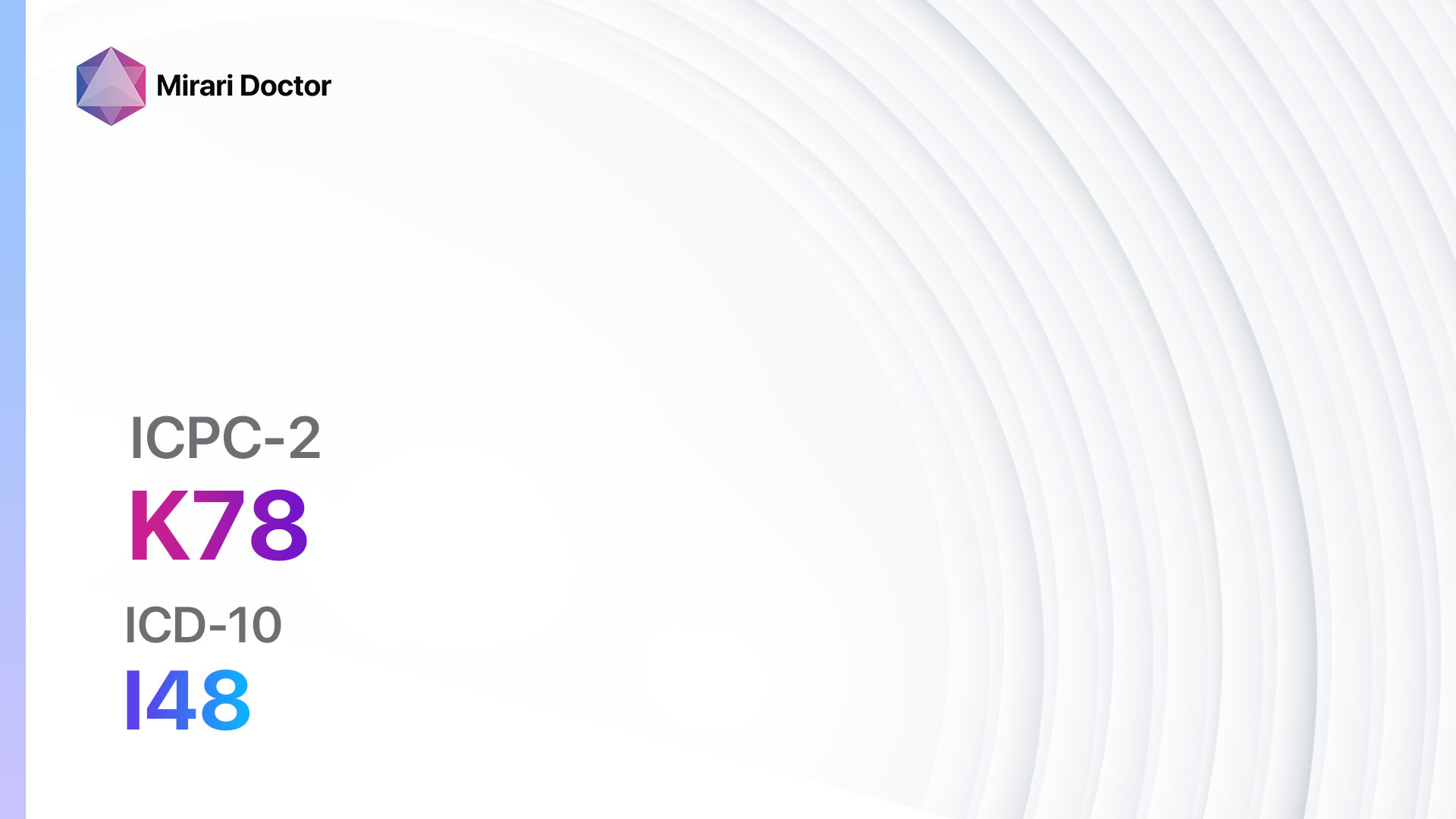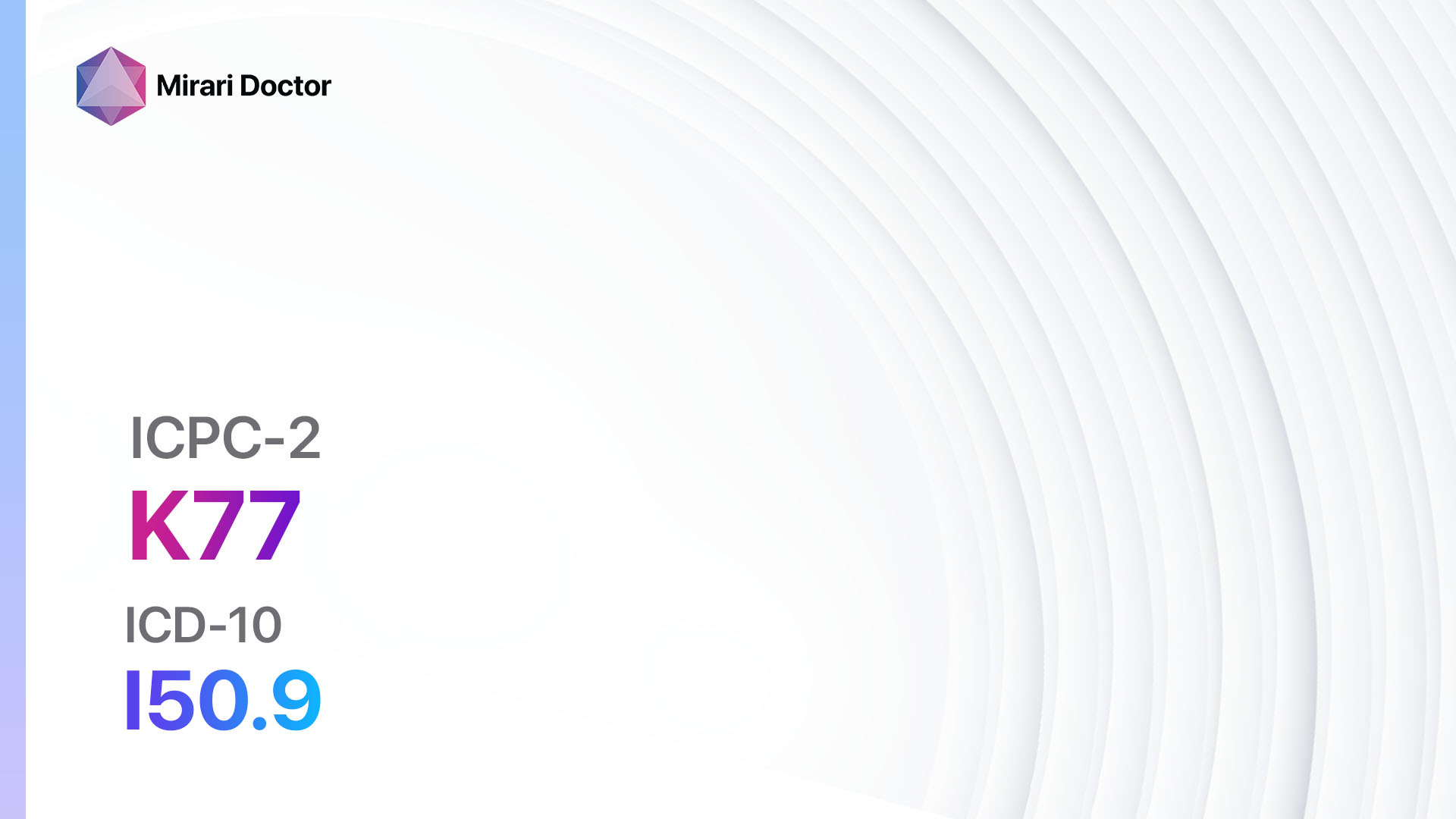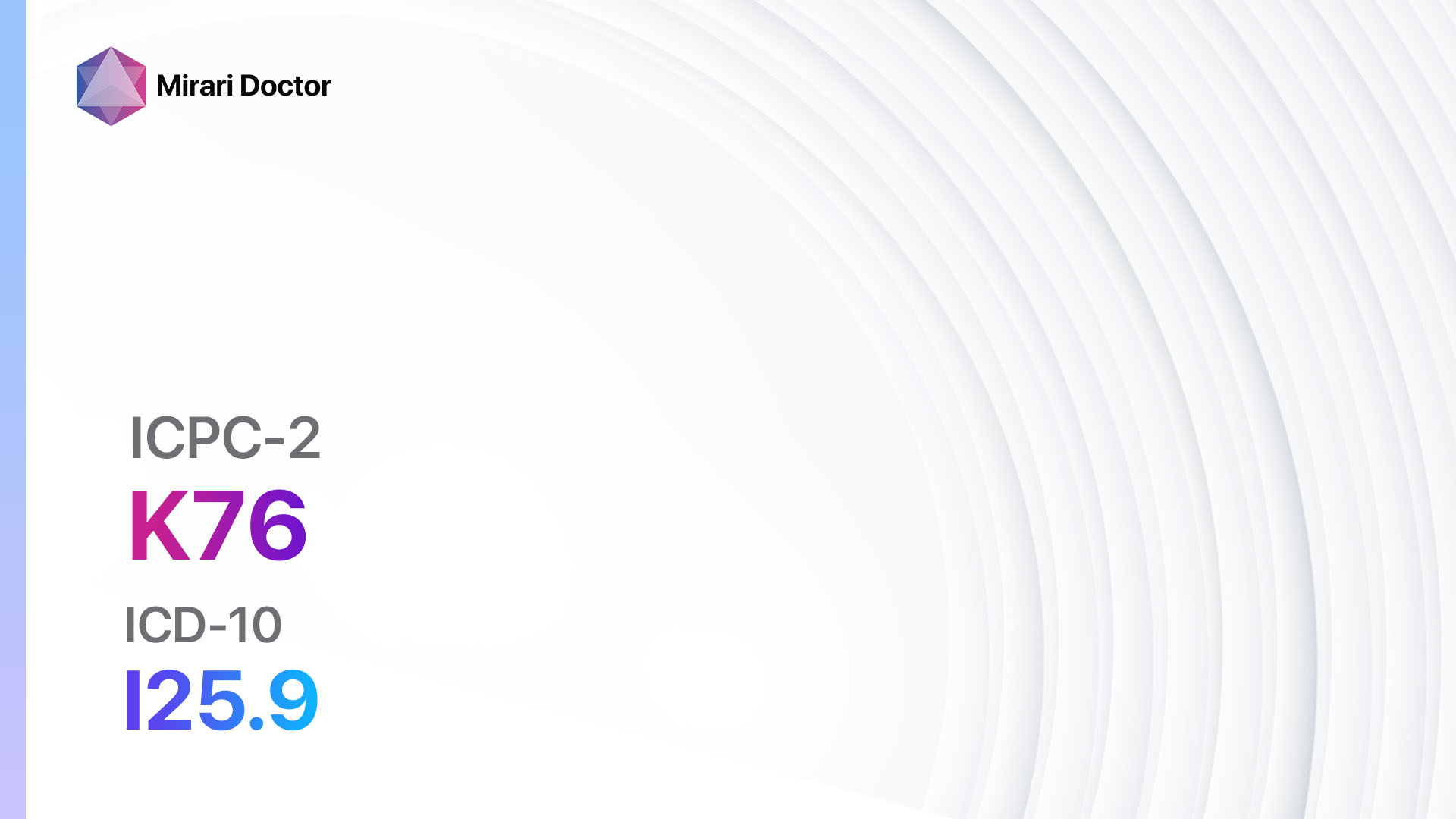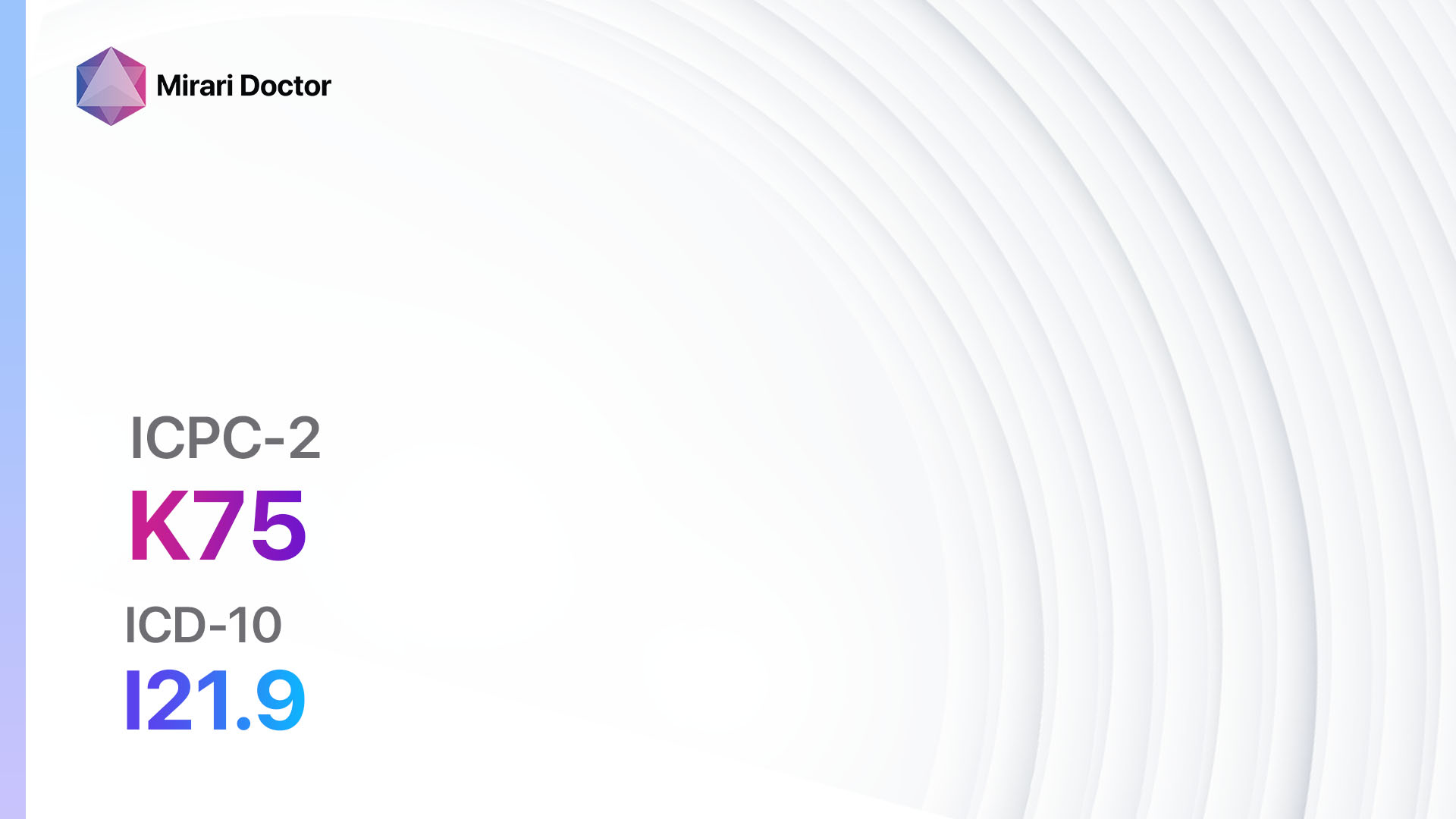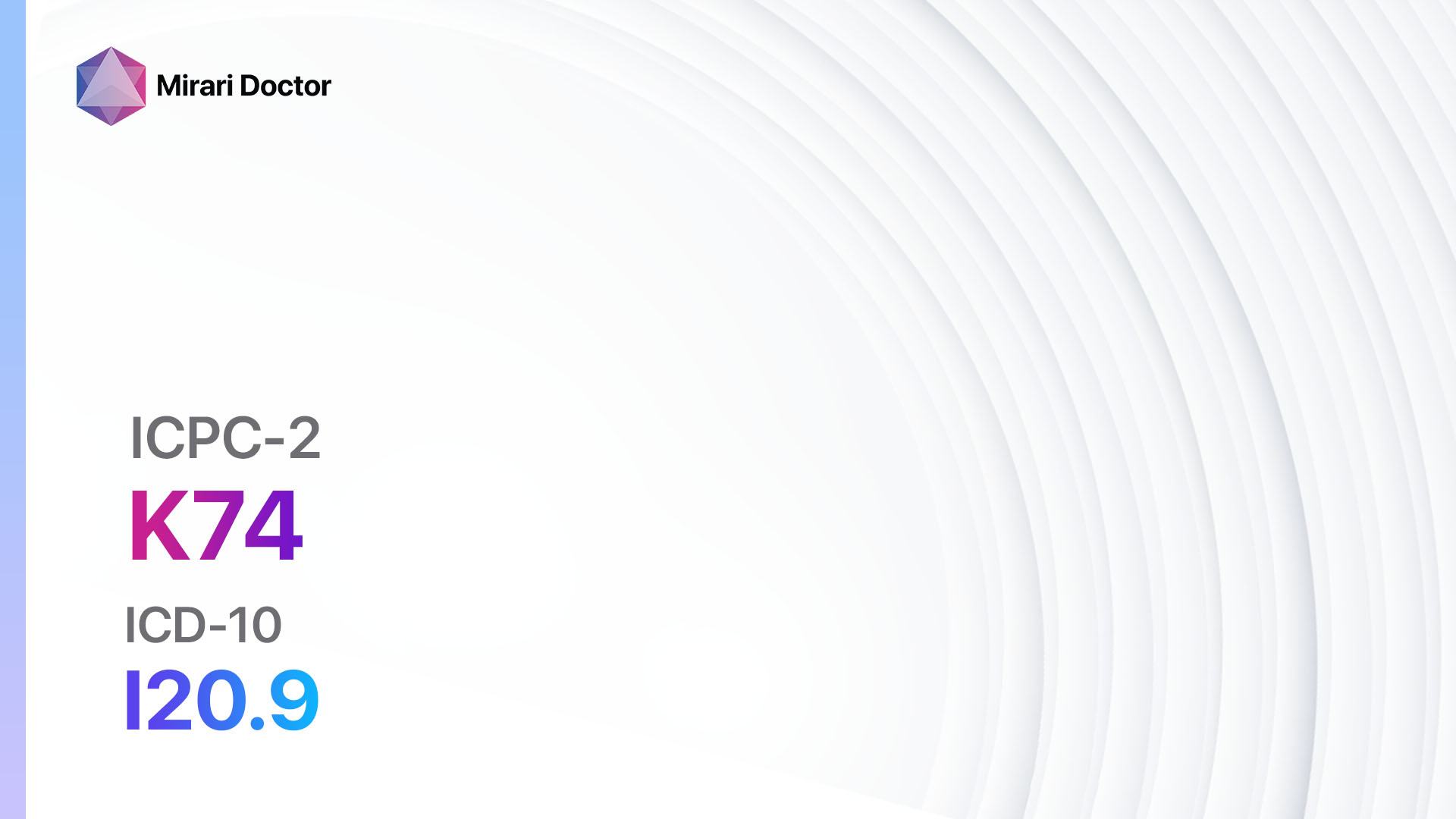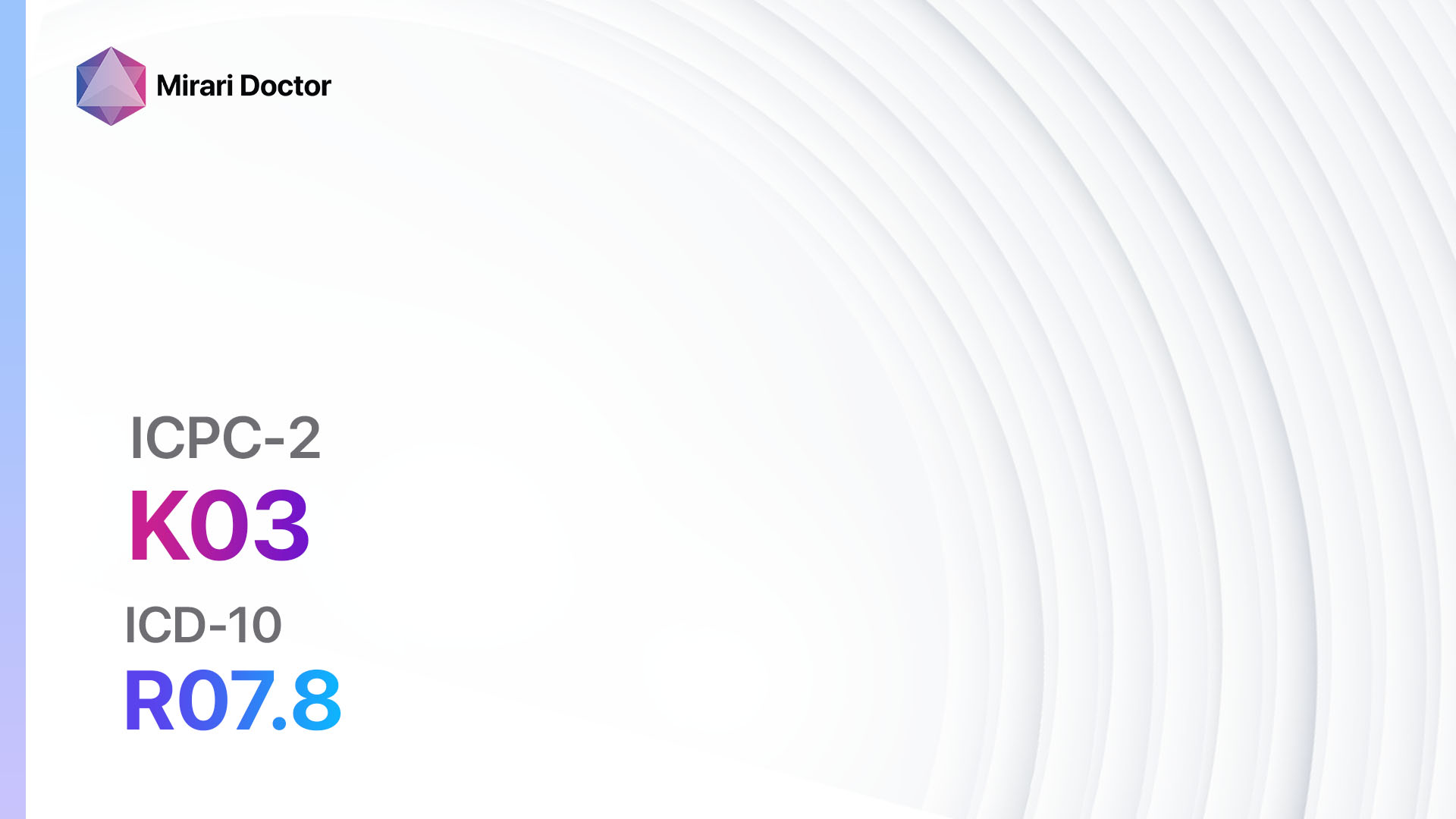
Introduction
Cardiovascular pain NOS (Not Otherwise Specified) refers to non-specific chest pain that is not clearly attributed to a specific cardiovascular condition[1]. It is important to evaluate and diagnose this condition to rule out any underlying cardiovascular diseases[2]. The aim of this guide is to provide a step-by-step approach to diagnosing and managing cardiovascular pain NOS.
Codes
Symptoms
- Chest pain or discomfort[5]
- Pain radiating to the arms, jaw, neck, or back[6]
- Shortness of breath[7]
- Sweating[8]
- Nausea or vomiting[9]
Causes
- Musculoskeletal causes (e.g., muscle strain, costochondritis)[10]
- Gastrointestinal causes (e.g., acid reflux, esophageal spasm)
- Anxiety or panic attacks
- Other non-cardiac causes (e.g., respiratory conditions, nerve compression)
Diagnostic Steps
Medical History
- Gather information about the patient’s symptoms, including the nature, duration, and intensity of the pain.
- Assess for any risk factors for cardiovascular diseases, such as smoking, hypertension, diabetes, or family history.
- Inquire about any medical conditions or medications that may contribute to chest pain.
- Evaluate the presence of any associated symptoms, such as shortness of breath or sweating.
Physical Examination
- Perform a thorough physical examination, including vital signs, heart and lung auscultation, and assessment of chest wall tenderness.
- Look for any signs of distress or anxiety.
- Assess for any abnormal heart sounds or murmurs.
- Palpate the chest wall to identify any areas of tenderness or muscle strain.
Laboratory Tests
- Complete blood count (CBC) to assess for signs of infection or anemia.
- Basic metabolic panel (BMP) to evaluate electrolyte imbalances or kidney dysfunction.
- Lipid profile to assess for dyslipidemia.
- Cardiac biomarkers (e.g., troponin) to rule out acute myocardial infarction.
- Thyroid function tests to evaluate for thyroid disorders.
Diagnostic Imaging
- Chest X-ray to assess for any lung or chest wall abnormalities.
- Electrocardiogram (ECG) to evaluate for any cardiac arrhythmias or ischemic changes.
- Stress test (exercise or pharmacological) to assess for any exercise-induced ischemia.
- Echocardiogram to evaluate cardiac structure and function.
- Coronary angiography to visualize any coronary artery blockages.
Other Tests
- Esophageal pH monitoring to assess for acid reflux.
- Pulmonary function tests to evaluate for respiratory conditions.
- Nerve conduction studies to assess for nerve compression or neuropathy.
Follow-up and Patient Education
- Schedule a follow-up appointment to review the diagnostic results and discuss the next steps.
- Provide education to the patient about the potential causes of cardiovascular pain NOS and the importance of managing any underlying conditions.
- Encourage the patient to adopt a healthy lifestyle, including regular exercise, a balanced diet, and stress management techniques.
- Discuss the importance of seeking immediate medical attention if the symptoms worsen or new symptoms develop.
Possible Interventions
Traditional Interventions
Medications:
Top 5 drugs for Cardiovascular pain NOS:
- Nonsteroidal anti-inflammatory drugs (NSAIDs) (e.g., Ibuprofen, Naproxen):
- Cost: Generic versions can be $3-$20/month.
- Contraindications: History of gastrointestinal bleeding, renal impairment.
- Side effects: Upset stomach, increased risk of bleeding.
- Severe side effects: Gastrointestinal ulcers, kidney damage.
- Drug interactions: Anticoagulants, other NSAIDs.
- Warning: Prolonged use may increase the risk of cardiovascular events.
- Proton pump inhibitors (PPIs) (e.g., Omeprazole, Pantoprazole):
- Cost: Generic versions can be $5-$30/month.
- Contraindications: Hypersensitivity to PPIs.
- Side effects: Headache, diarrhea.
- Severe side effects: Increased risk of fractures, Clostridium difficile infection.
- Drug interactions: Clopidogrel, certain antifungal medications.
- Warning: Long-term use may increase the risk of certain nutrient deficiencies.
- Anxiolytics (e.g., Lorazepam, Alprazolam):
- Cost: Generic versions can be $5-$30/month.
- Contraindications: History of substance abuse, respiratory depression.
- Side effects: Sedation, dizziness.
- Severe side effects: Respiratory depression, dependence.
- Drug interactions: Alcohol, opioids.
- Warning: May cause drowsiness, avoid driving or operating machinery.
- Antidepressants (e.g., Sertraline, Escitalopram):
- Cost: Generic versions can be $5-$30/month.
- Contraindications: Concurrent use of monoamine oxidase inhibitors (MAOIs).
- Side effects: Nausea, headache.
- Severe side effects: Serotonin syndrome, suicidal thoughts.
- Drug interactions: MAOIs, certain pain medications.
- Warning: May take several weeks to achieve full effect.
- Calcium channel blockers (e.g., Amlodipine, Diltiazem):
- Cost: Generic versions can be $10-$50/month.
- Contraindications: Severe hypotension, heart failure.
- Side effects: Edema, dizziness.
- Severe side effects: Bradycardia, heart block.
- Drug interactions: Beta-blockers, grapefruit juice.
- Warning: Regular blood pressure monitoring is required.
Alternative Drugs:
- Muscle relaxants (e.g., Cyclobenzaprine): May help relieve muscle tension and pain. Cost: Generic versions can be $5-$30/month.
- Antacids (e.g., Tums, Maalox): Provide temporary relief from acid reflux. Cost: $5-$15/month.
- Antispasmodics (e.g., Dicyclomine): May help relieve esophageal spasms. Cost: Generic versions can be $5-$30/month.
- Antidepressants (e.g., Amitriptyline, Nortriptyline): Can help manage pain and improve sleep. Cost: Generic versions can be $5-$30/month.
- Beta-blockers (e.g., Propranolol, Carvedilol): May be used for patients with anxiety-related chest pain. Cost: Generic versions can be $5-$30/month.
Surgical Procedures:
- None indicated for cardiovascular pain NOS.
Alternative Interventions
- Acupuncture: May help improve blood flow and reduce pain. Cost: $60-$120 per session.
- Chelation therapy: Controversial treatment involving the administration of chelating agents to remove heavy metals from the body. Cost: $75-$150 per session.
- Hyperbaric oxygen therapy: Involves breathing pure oxygen in a pressurized chamber to increase oxygen delivery to tissues. Cost: $200-$300 per session.
- Herbal supplements: Some herbs, such as garlic and ginkgo biloba, may have potential benefits for improving circulation. Cost: Varies depending on the specific supplement.
Lifestyle Interventions
- Regular exercise: Engaging in aerobic exercise for at least 30 minutes a day can improve cardiovascular health. Cost: Varies (e.g., gym membership, equipment).
- Healthy diet: Consuming a diet rich in fruits, vegetables, whole grains, and lean proteins can help manage cardiovascular risk factors. Cost: Varies depending on food choices.
- Stress management: Practicing relaxation techniques, such as deep breathing exercises or meditation, can help reduce stress and improve overall well-being. Cost: Varies (e.g., self-guided techniques, professional therapy).
- Smoking cessation: Quitting smoking can significantly reduce the risk of cardiovascular diseases. Cost: Varies (e.g., nicotine replacement therapy, counseling).
- Weight management: Maintaining a healthy weight through a balanced diet and regular exercise can improve cardiovascular health. Cost: Varies (e.g., healthy food choices, gym membership).
It is important to note that the cost ranges provided are approximate and may vary depending on the location and availability of the interventions.
Mirari Cold Plasma Alternative Intervention
Understanding Mirari Cold Plasma
- Safe and Non-Invasive Treatment: Mirari Cold Plasma is a safe and non-invasive treatment option for various skin conditions. It does not require incisions, minimizing the risk of scarring, bleeding, or tissue damage.
- Efficient Extraction of Foreign Bodies: Mirari Cold Plasma facilitates the removal of foreign bodies from the skin by degrading and dissociating organic matter, allowing easier access and extraction.
- Pain Reduction and Comfort: Mirari Cold Plasma has a local analgesic effect, providing pain relief during the treatment, making it more comfortable for the patient.
- Reduced Risk of Infection: Mirari Cold Plasma has antimicrobial properties, effectively killing bacteria and reducing the risk of infection.
- Accelerated Healing and Minimal Scarring: Mirari Cold Plasma stimulates wound healing and tissue regeneration, reducing healing time and minimizing the formation of scars.
Mirari Cold Plasma Prescription
Video instructions for using Mirari Cold Plasma Device – K03 Cardiovascular pain NOS (ICD-10:R07.8)
| Mild | Moderate | Severe |
| Mode setting: 1 (Infection) Location: 5 (Lungs) Morning: 15 minutes, Evening: 15 minutes |
Mode setting: 1 (Infection) Location: 5 (Lungs) Morning: 30 minutes, Lunch: 30 minutes, Evening: 30 minutes |
Mode setting: 1 (Infection) Location: 5 (Lungs) Morning: 30 minutes, Lunch: 30 minutes, Evening: 30 minutes |
| Mode setting: 2 (Wound Healing) Location: 5 (Lungs) Morning: 15 minutes, Evening: 15 minutes |
Mode setting: 2 (Wound Healing) Location: 5 (Lungs) Morning: 30 minutes, Lunch: 30 minutes, Evening: 30 minutes |
Mode setting: 2 (Wound Healing) Location: 5 (Lungs) Morning: 30 minutes, Lunch: 30 minutes, Evening: 30 minutes |
| Mode setting: 3 (Antiviral Therapy) Location: 0 (Localized) Morning: 15 minutes, Evening: 15 minutes |
Mode setting: 3 (Antiviral Therapy) Location: 0 (Localized) Morning: 30 minutes, Lunch: 30 minutes, Evening: 30 minutes |
Mode setting: 3 (Antiviral Therapy) Location: 0 (Localized) Morning: 30 minutes, Lunch: 30 minutes, Evening: 30 minutes |
| Mode setting: 7 (Immunotherapy) Location: 4 (Heart, Bile & Pancreas) Morning: 15 minutes, Evening: 15 minutes |
Mode setting: 7 (Immunotherapy) Location: 4 (Heart, Bile & Pancreas) Morning: 30 minutes, Lunch: 30 minutes, Evening: 30 minutes |
Mode setting:7 (Immunotherapy) Location: 4 (Heart, Bile & Pancreas) Morning: 30 minutes, Lunch: 30 minutes, Evening: 30 minutes |
| Total Morning: 60 minutes approx. $10 USD, Evening: 60 minutes approx. $10 USD |
Total Morning: 120 minutes approx. $20 USD, Lunch: 120 minutes approx. $20 USD, Evening: 120 minutes approx. $20 USD, |
Total Morning: 120 minutes approx. $20 USD, Lunch: 120 minutes approx. $20 USD, Evening: 120 minutes approx. $20 USD, |
| Usual treatment for 7-60 days approx. $140 USD – $1200 USD | Usual treatment for 6-8 weeks approx. $2,520 USD – $3,360 USD |
Usual treatment for 3-6 months approx. $5,400 USD – $10,800 USD
|
 |
|
Use the Mirari Cold Plasma device to treat Cardiovascular pain NOS effectively.
WARNING: MIRARI COLD PLASMA IS DESIGNED FOR THE HUMAN BODY WITHOUT ANY ARTIFICIAL OR THIRD PARTY PRODUCTS. USE OF OTHER PRODUCTS IN COMBINATION WITH MIRARI COLD PLASMA MAY CAUSE UNPREDICTABLE EFFECTS, HARM OR INJURY. PLEASE CONSULT A MEDICAL PROFESSIONAL BEFORE COMBINING ANY OTHER PRODUCTS WITH USE OF MIRARI.
Step 1: Cleanse the Skin
- Start by cleaning the affected area of the skin with a gentle cleanser or mild soap and water. Gently pat the area dry with a clean towel.
Step 2: Prepare the Mirari Cold Plasma device
- Ensure that the Mirari Cold Plasma device is fully charged or has fresh batteries as per the manufacturer’s instructions. Make sure the device is clean and in good working condition.
- Switch on the Mirari device using the power button or by following the specific instructions provided with the device.
- Some Mirari devices may have adjustable settings for intensity or treatment duration. Follow the manufacturer’s instructions to select the appropriate settings based on your needs and the recommended guidelines.
Step 3: Apply the Device
- Place the Mirari device in direct contact with the affected area of the skin. Gently glide or hold the device over the skin surface, ensuring even coverage of the area experiencing.
- Slowly move the Mirari device in a circular motion or follow a specific pattern as indicated in the user manual. This helps ensure thorough treatment coverage.
Step 4: Monitor and Assess:
- Keep track of your progress and evaluate the effectiveness of the Mirari device in managing your Cardiovascular pain NOS. If you have any concerns or notice any adverse reactions, consult with your health care professional.
Note
This guide is for informational purposes only and should not replace the advice of a medical professional. Always consult with your healthcare provider or a qualified medical professional for personal advice, diagnosis, or treatment. Do not solely rely on the information presented here for decisions about your health. Use of this information is at your own risk. The authors of this guide, nor any associated entities or platforms, are not responsible for any potential adverse effects or outcomes based on the content.
Mirari Cold Plasma System Disclaimer
- Purpose: The Mirari Cold Plasma System is a Class 2 medical device designed for use by trained healthcare professionals. It is registered for use in Thailand and Vietnam. It is not intended for use outside of these locations.
- Informational Use: The content and information provided with the device are for educational and informational purposes only. They are not a substitute for professional medical advice or care.
- Variable Outcomes: While the device is approved for specific uses, individual outcomes can differ. We do not assert or guarantee specific medical outcomes.
- Consultation: Prior to utilizing the device or making decisions based on its content, it is essential to consult with a Certified Mirari Tele-Therapist and your medical healthcare provider regarding specific protocols.
- Liability: By using this device, users are acknowledging and accepting all potential risks. Neither the manufacturer nor the distributor will be held accountable for any adverse reactions, injuries, or damages stemming from its use.
- Geographical Availability: This device has received approval for designated purposes by the Thai and Vietnam FDA. As of now, outside of Thailand and Vietnam, the Mirari Cold Plasma System is not available for purchase or use.
References
- Cervellin, G., & Lippi, G. (2014). Chest pain, dyspnea and other symptoms in patients with type 1 and 2 myocardial infarction. A literature review. International Journal of Cardiology, 176(2), 277-281.
- Swap, C. J., & Nagurney, J. T. (2005). Value and limitations of chest pain history in the evaluation of patients with suspected acute coronary syndromes. JAMA, 294(20), 2623-2629.
- WONCA International Classification Committee. (1998). ICPC-2: International Classification of Primary Care. Oxford University Press, USA.
- World Health Organization. (2015). International statistical classification of diseases and related health problems (Vol. 1). World Health Organization.
- Gibbons, R. J., Chatterjee, K., Daley, J., Douglas, J. S., Fihn, S. D., Gardin, J. M., … & Spertus, J. A. (1999). ACC/AHA/ACP–ASIM guidelines for the management of patients with chronic stable angina: a report of the American College of Cardiology/American Heart Association Task Force on Practice Guidelines (Committee on Management of Patients With Chronic Stable Angina). Journal of the American College of Cardiology, 33(7), 2092-2197.
- Erhardt, L., Herlitz, J., Bossaert, L., Halinen, M., Keltai, M., Koster, R., … & Van de Werf, F. (2002). Task force on the management of chest pain. European Heart Journal, 23(15), 1153-1176.
- Wise, C. M. (2008). Chest wall syndromes. Current Opinion in Rheumatology, 20(6), 646-650.
- Fass, R., & Dickman, R. (2006). Non-cardiac chest pain: an update. Neurogastroenterology & Motility, 18(6), 408-417.
- Huffman, J. C., & Pollack, M. H. (2003). Predicting panic disorder among patients with chest pain: an analysis of the literature. Psychosomatics, 44(3), 222-236.
- Wise, C. M. (2008). Chest wall syndromes. Current Opinion in Rheumatology, 20(6), 646-650.
Related articles
Made in USA


